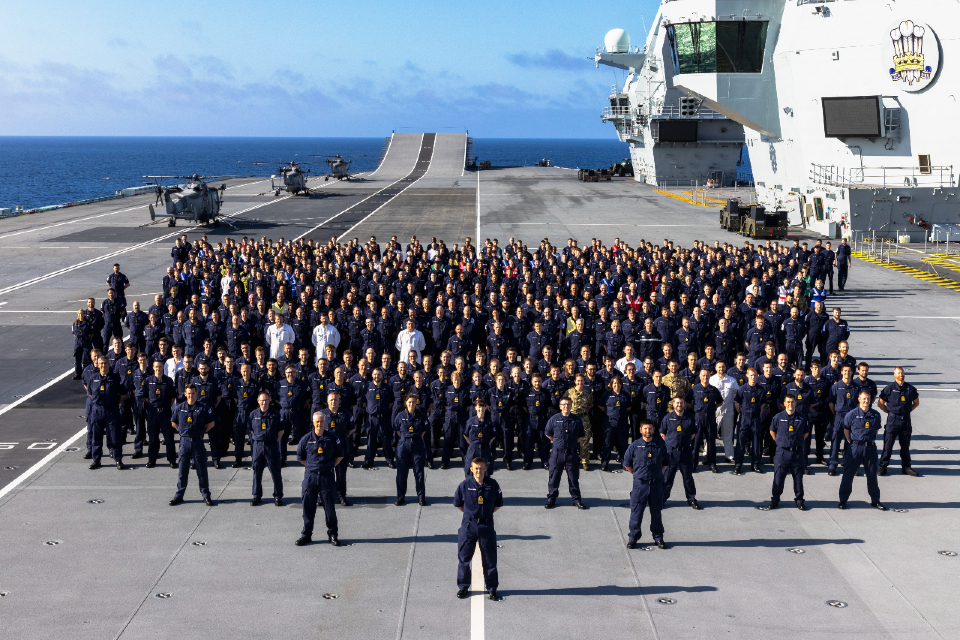The traditional way to record sailors entering or exiting a vessel is by simply pegging into/out board. This record is used for emergency situations at sea and in ports. Visitors and contractors have their own processes, adding to the complexity.
Organised as part of the Defence and Security Accelerator contest, The Defence Science and Technology Laboratory(Dstl), supports this project to examine innovative Personnel Accounting and Locations solutions to account, muster and locate personnel on Queen Elizabeth Class (QEC), carrier carriers in real time.
Because of the size of the ship, its relatively small company and the number of compartments it contains, it is extremely difficult to pinpoint crew members who have not been seen in a while.
A variety technologies were evaluated on several vessels. Kinsetsu was selected to provide a Radio Frequency Identification, (RFID),-based solution. This system is currently being evaluated through a Fleet Trial with HMS Queen Elizabeth, QNLZ, and HMS Prince of Wales, (PWLS).
A Fleet Trial of Kinsetsu’s Ktrack system in QNLZ and PWLS will be tested to determine its effectiveness on a real Royal Navy vessel. It will also explore human factors issues related to SOBs who wear this RFID technology.
This trial covered the evaluation of the merits of a combined high frequency and ultra high frequency identity card. It was worn on a belt around the SOB’s neck. It is not the same as tags on bootslaces.
Kinsetsu was responsible for installing all of the PAL cabling and equipment in PWLS (Internal Network Electronics), and VLANs (Virtual Local Area Networks) in PWLS. These devices were ready to be used as an interim PAL capability during Op Fortis, which is the operational deployment from the Carrier Strike Group.
QNLZ supports PAL functions such as:
Accounting via High-Frequency (HF), readers (4 each at Starboard Forward, Starboard Aft, Port Forward gangway reception areas); ingress and exit direction of these readers may be set dynamically for maximum SOB flow.
SOB registration, querying and storage via 2 client laptops. (Swapped between Starboard / Port Forward receptions and Exec / RN Police offices) plus 2 registration HF units.
6 Ultra High Frequency RFID readers with antennae on 2 and 5, near laundry, NAAFI and Junior/Senior Rating Mess halls, provide an experimental locator function that can detect if a SOB has a UHF Tag.
Mustering of SOBs for simulated emergencies using 4 HF readers located near the entrances of Junior and Senior-Rate Mess halls.
Mobile registration and accounting with HF reader for SOBs who arrive/depart the ship via helicopter/boat
The trials will take place on both ships over the next month to gather functional data for the build system and to capture operator and user feedback. This trial will end in June 2022. This information will be used as a basis for future procurement of Defence Equipment and Support (DE&S).
Lieutenant Commander Glen Kerrigan was the Capital Ships Weapon Engineer for the Royal Navy, and outgoing project sponsor.
The PAL Project has exceeded all expectations. It provides evidence that technology can reduce risk to life (RtL) for Souls on Board. HMS Queen Elizabeth uses this method as her primary accounting method in order to support her global deployment Op Fortis.
It’s not easy to be successful in a high-demand environment, such as a strategic defence platform. This feat is impossible for any project. Solid collaboration among suppliers and defence organisations has allowed us to reach this stage.
George Curtis was the Dstl Project manager.
The Royal Navy will be able to use the interim personnel accounting system as an operational tool for both trial and deployment. It will significantly improve the safety of navy personnel with the possibility of adoption on other vessels.

